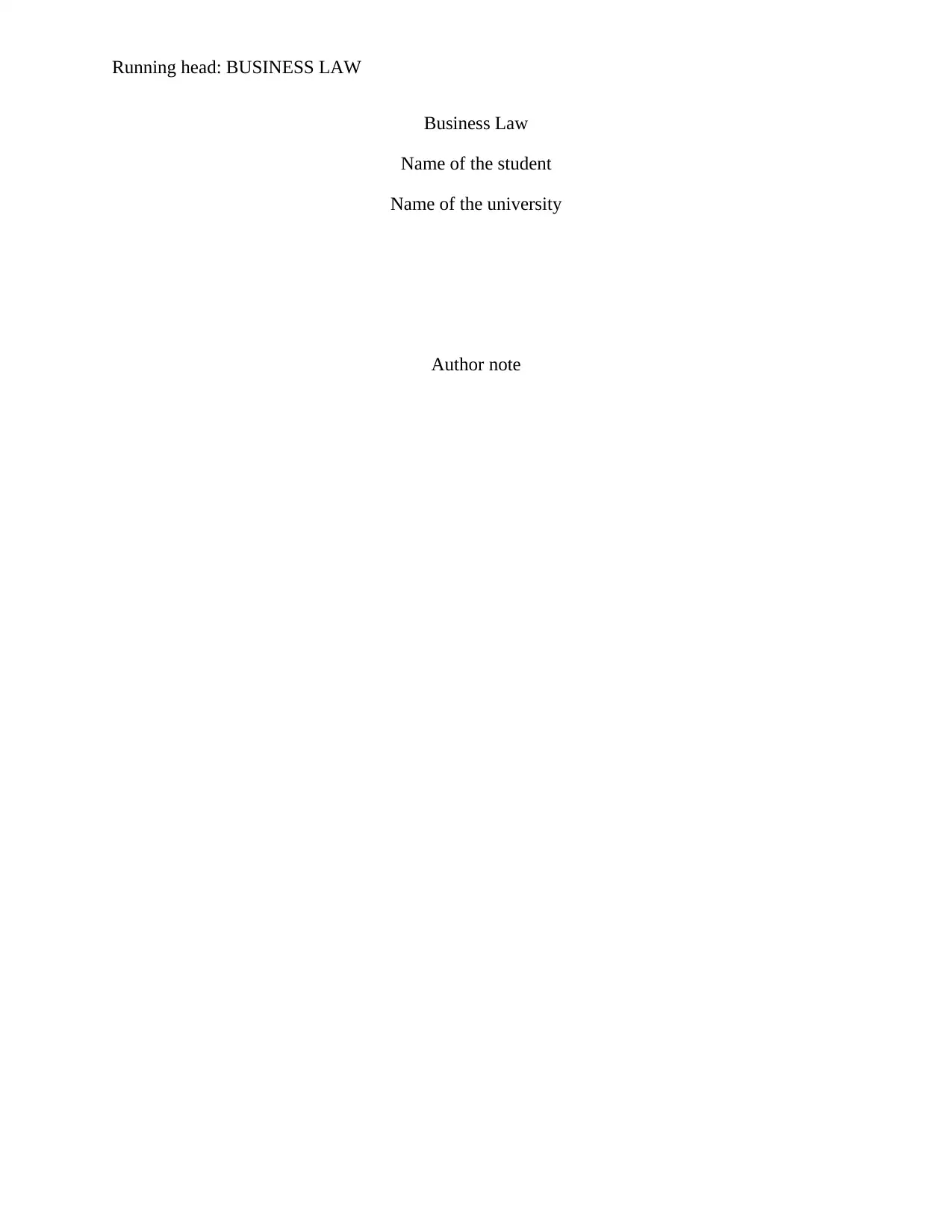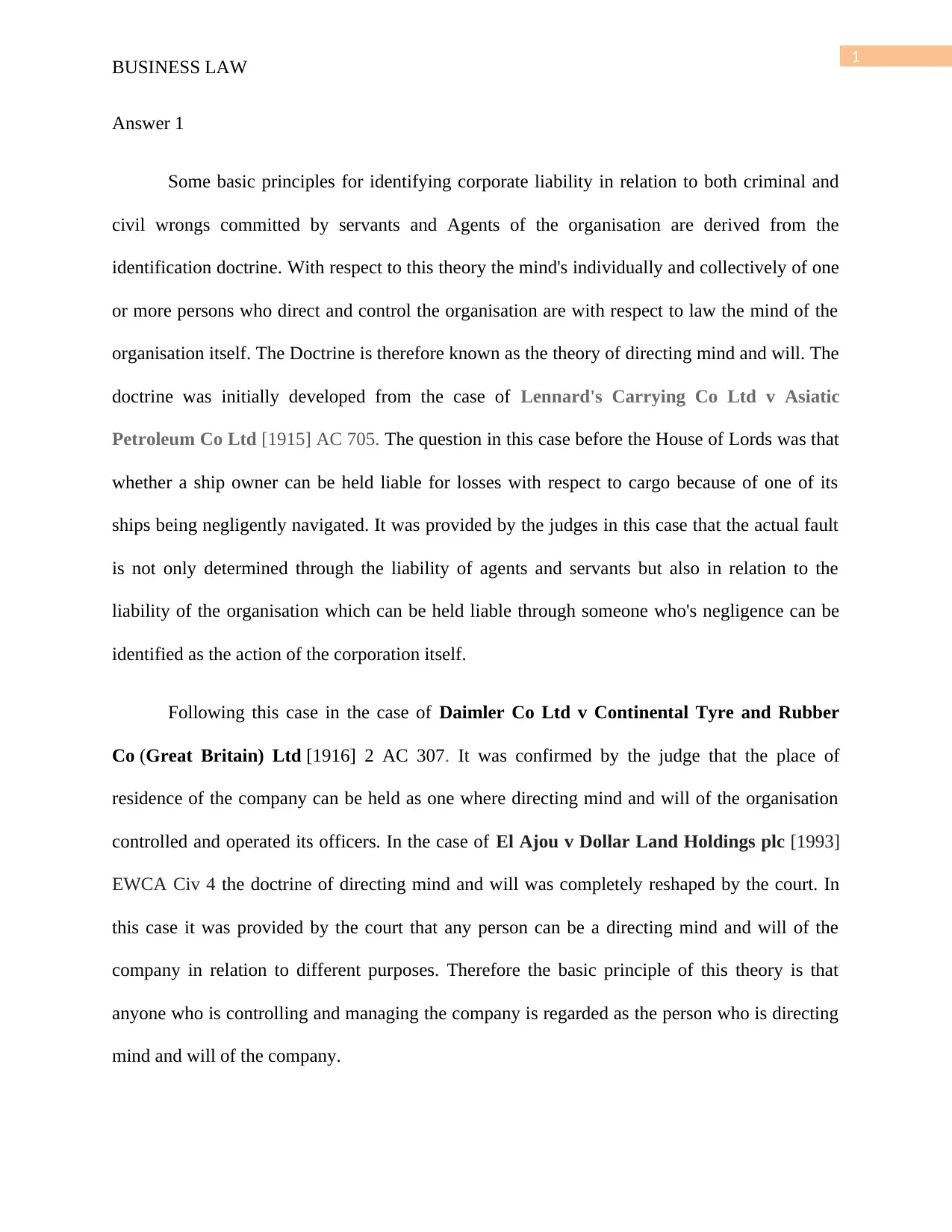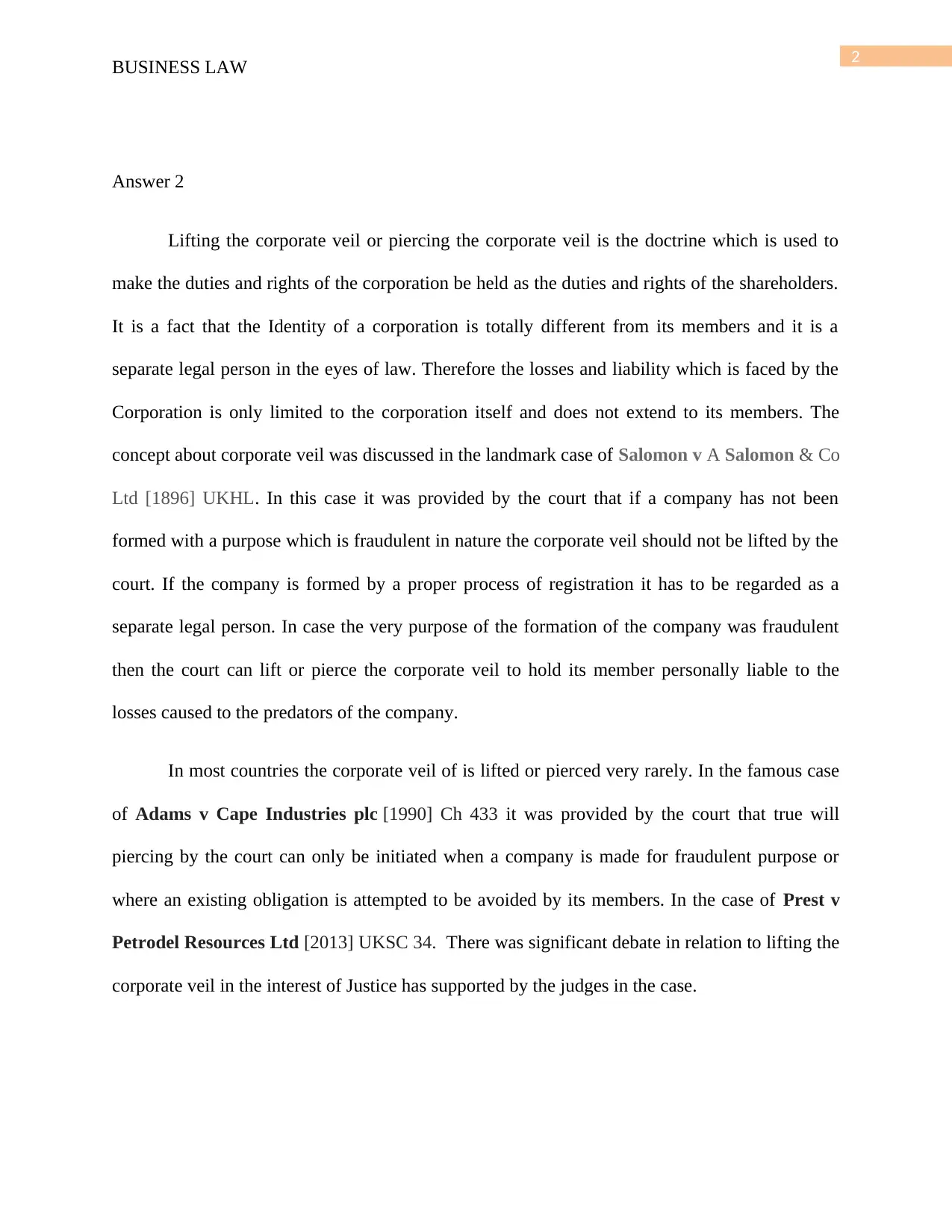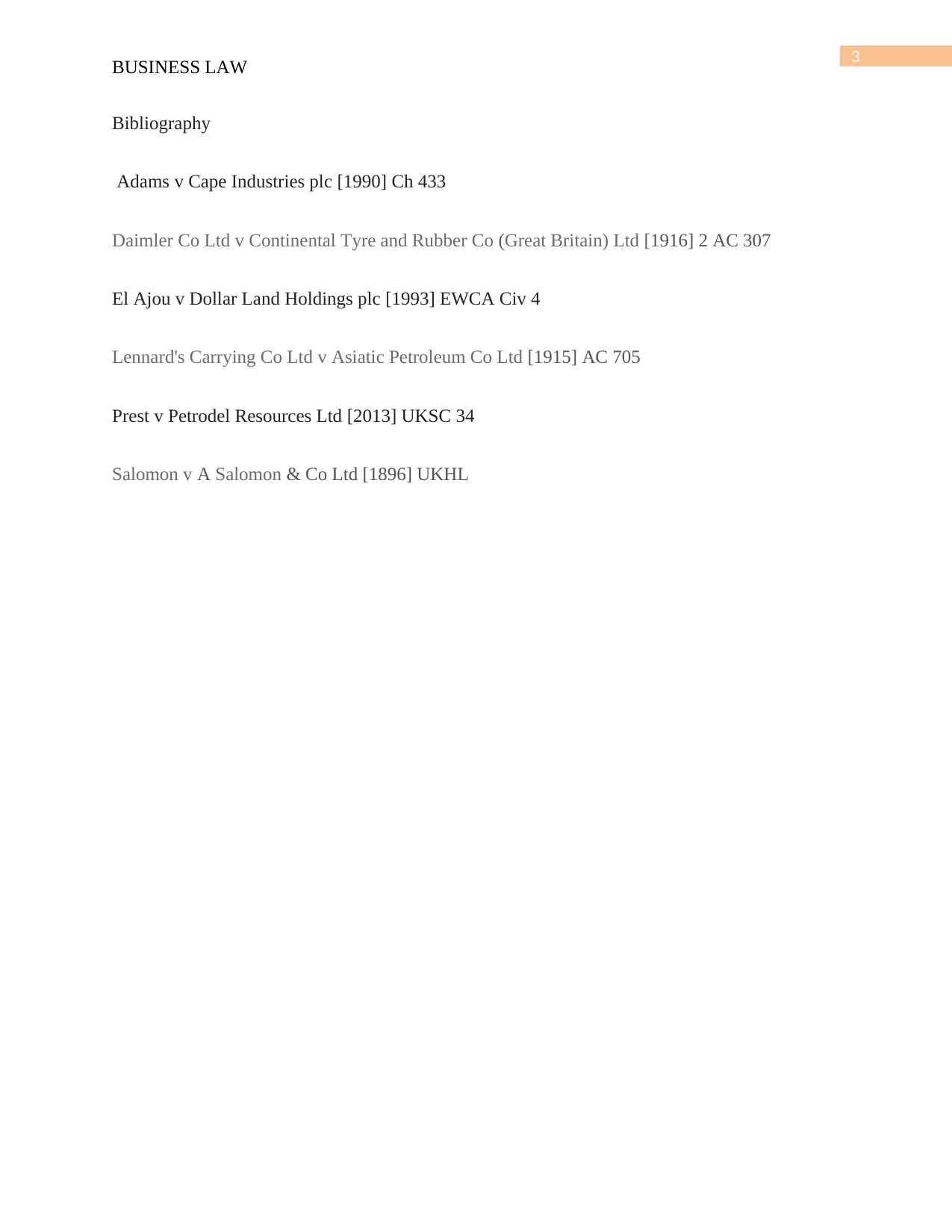Business Law 1 Assignment - Corporate Liability, Veil Lifting, Cases
VerifiedAdded on 2020/03/28
|4
|771
|137
Homework Assignment
AI Summary
This business law assignment explores two key concepts: corporate liability and lifting the corporate veil. The assignment begins by examining the identification doctrine, also known as the directing mind and will theory, which determines corporate liability for the actions of its servants and agents. It traces the development of this doctrine through landmark cases such as Lennard's Carrying Co Ltd v Asiatic Petroleum Co Ltd and Daimler Co Ltd v Continental Tyre and Rubber Co (Great Britain) Ltd. The assignment then shifts to the concept of lifting the corporate veil, a doctrine used to hold shareholders responsible for corporate actions. It discusses the principle of separate legal personality established in Salomon v A Salomon & Co Ltd and explores when courts may pierce the corporate veil, referencing cases like Adams v Cape Industries plc and Prest v Petrodel Resources Ltd. The assignment concludes with a bibliography of cited cases.
1 out of 4











![[object Object]](/_next/static/media/star-bottom.7253800d.svg)